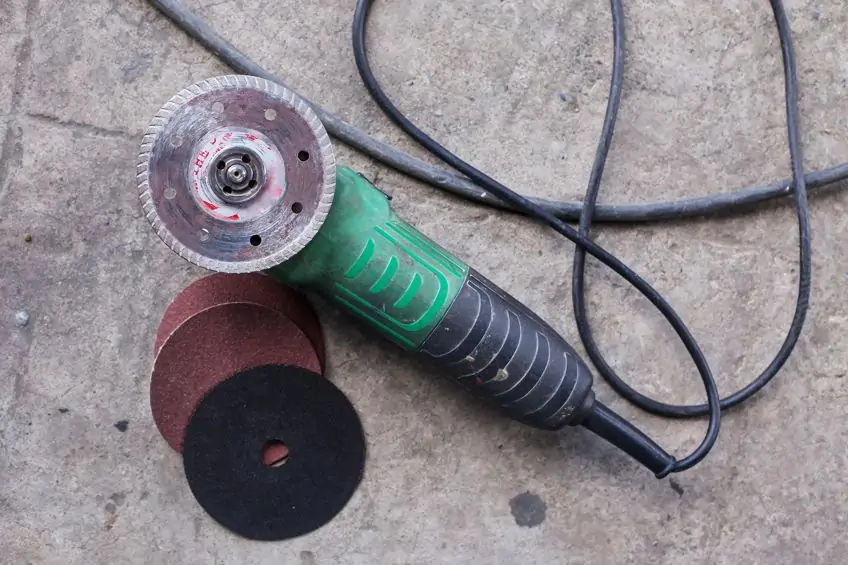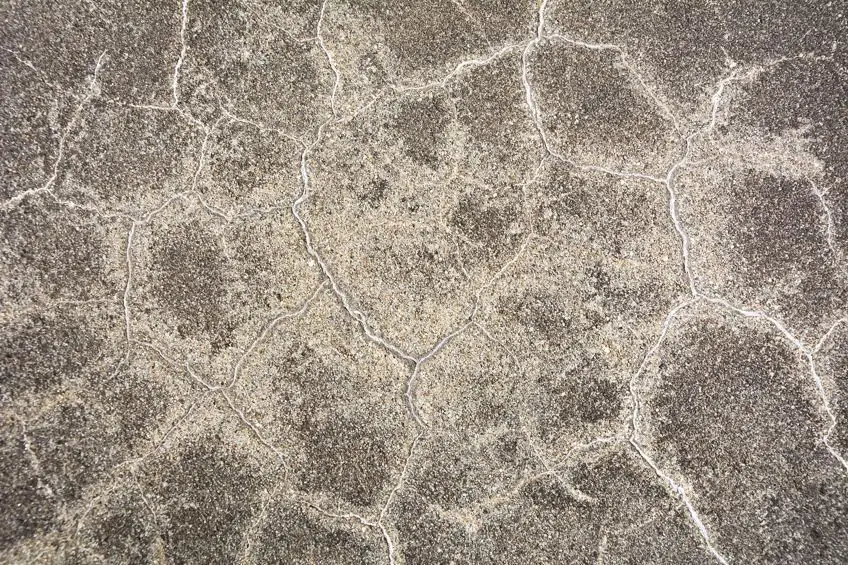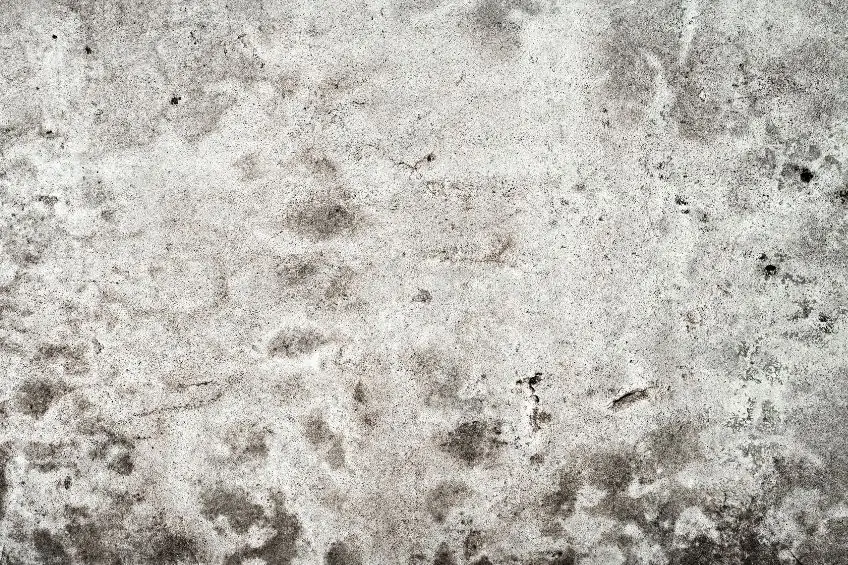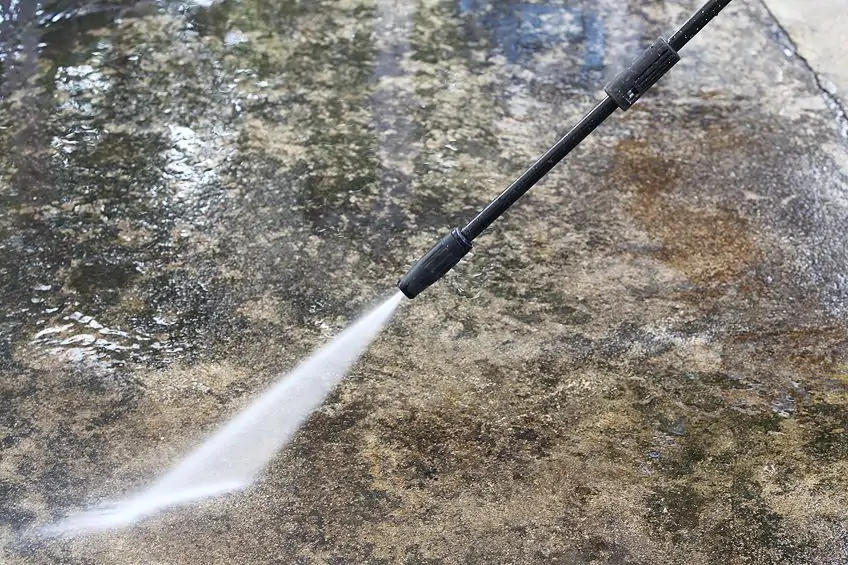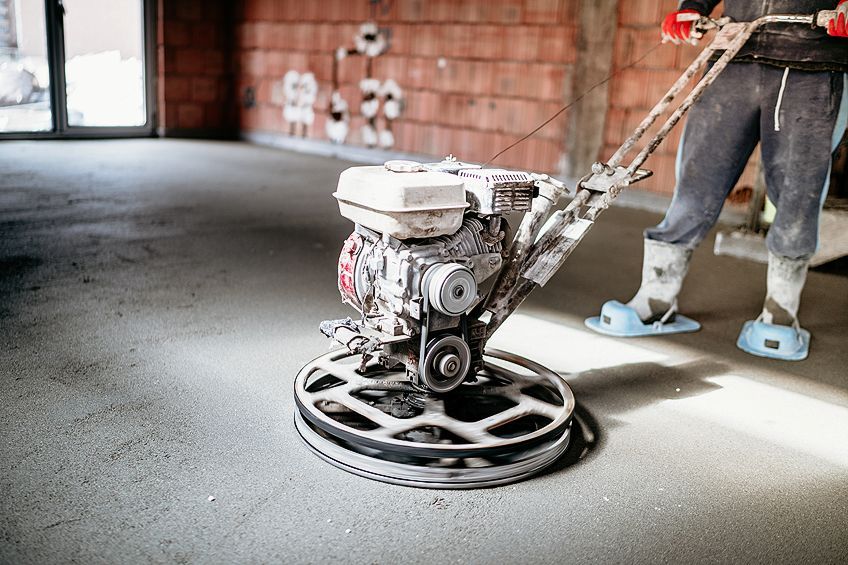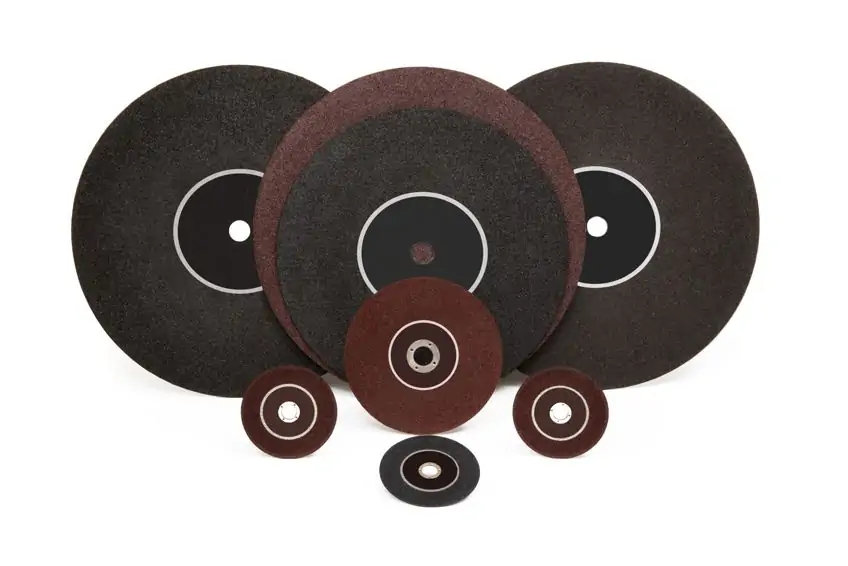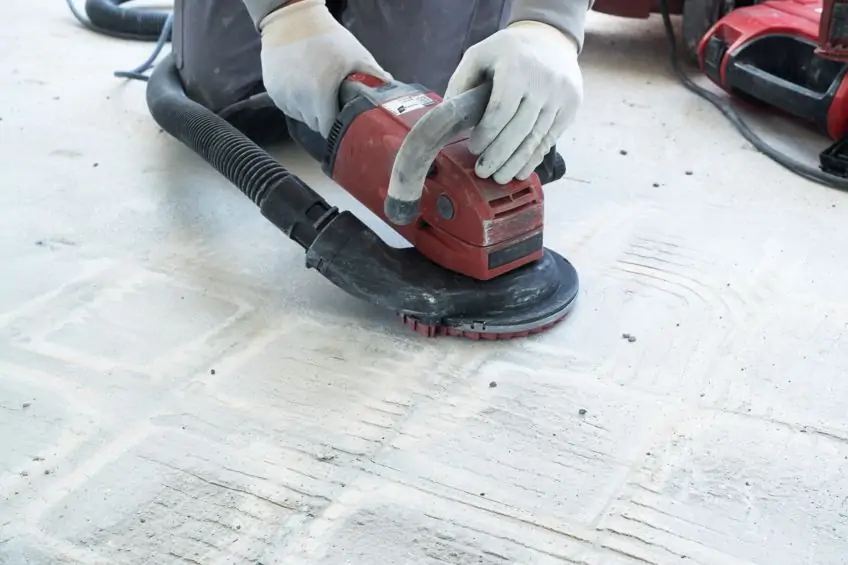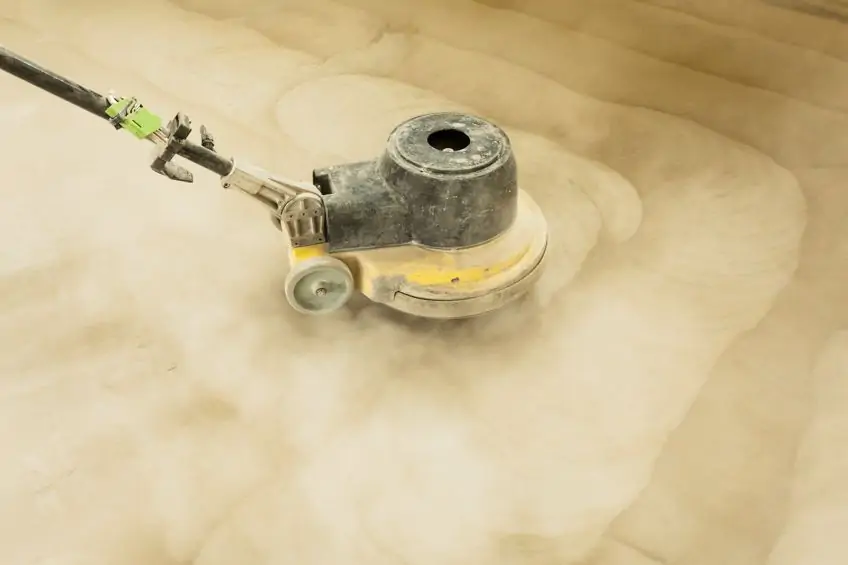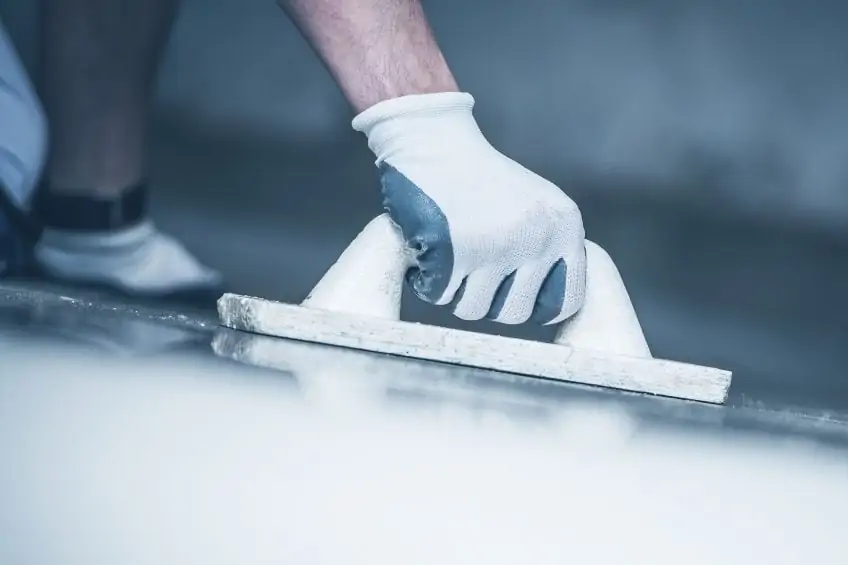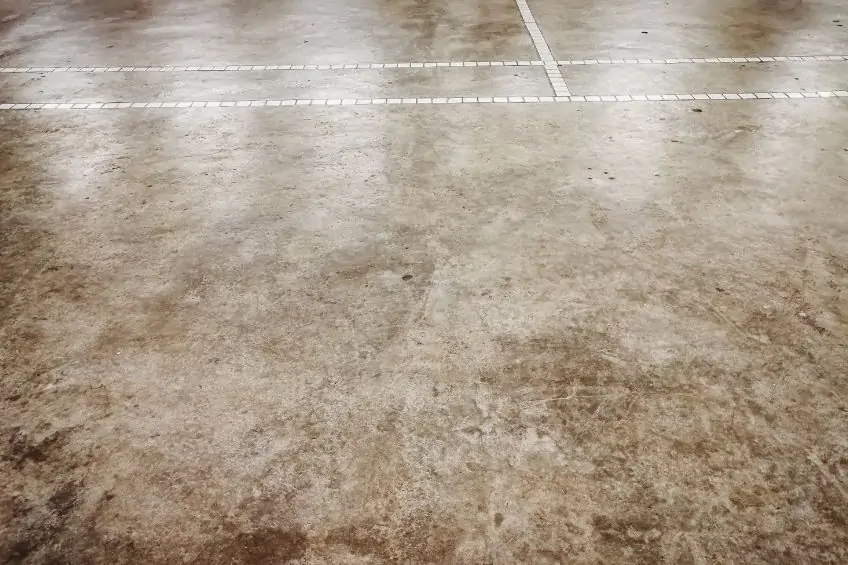How to Sand Concrete – The Best Tools for Concrete Sanding
This post may contain affiliate links. We may earn a small commission from purchases made through them, at no additional cost to you. You help to support resin-expert.com
Not only is concrete incredibly durable, but it is also versatile. From sidewalks to countertops, concrete is being used more often than ever, and it is also being recognized for its appealing natural aesthetic. Choosing to sand a concrete surface yourself can save you the cost of hiring a professional. With a little guidance and the correct tools, you will be well on your way to sanding the concrete floor or countertop all on your own. This article covers it all!
Table of Contents
Can You Sand Concrete?
Considering the nature of concrete and how hard it is, you may be asking the question, can you sand concrete with regular sandpaper? While it is possible to sand concrete, both ceramic and aluminum oxide sandpaper are less than ideal for concrete sanding. Ideally, you want to use diamond sanding or polishing pads. These pads are available as a concrete hand sander as well as grinder attachments. Diamond cup grinding wheels are available for angle grinders. These are effective when it comes to concrete sanding.
Before we get to how to sand concrete it is wise to select the correct products for the job. With all the options on the market, it can be difficult to decide what products are best. This section of the article is aimed to help narrow down your options and help you decide which products are best.
Reasons for Sanding Concrete
It comes as no surprise that one of the most frequently used building materials is concrete. It has been used for centuries and has remained a trusted material for exteriors as well as interiors. There are a few reasons why one would want to sand concrete. Let us take a look at the main reasons for sanding concrete.
Salt and Pepper
This finish requires some extra work. To reach this look one will have to remove about a 1/16 of an inch layer of concrete. The goal is to remove as much concrete without exposing the aggregate. This will leave behind a black and white speckled, salt and pepper look that resembles polished granite. This finish is ideal for countertops and floors alike.
Removing Imperfections
Concrete is an extremely hard-wearing substance that is made by mixing coarse gravel (sometimes called aggregate) with water and cement. After the concrete has cured there are often sharp edges or imperfections such as aggregate that protrudes or high spots. These issues can be fixed with some sanding.
It is a good idea to smooth down sharp edges or jutting aggregate, as these can cause injury to persons or damage to car tires.
Stain or Coating Removal
Oil or glue stains and even old coats of paint can usually be removed with detergents or paint strippers. However, sometimes a stain or a coating can prove to be extremely difficult to remove even when using some of the strongest chemicals on the market.
It is in this case that one would look to more abrasive methods such as sanding. When sanding over a stain or old paint one is essentially removing a layer of concrete that will take with it the stain or paint leaving you with a fresh clean surface.
Sanding Post-repair
Old cracking and pitted concrete can be repaired with various filing methods such as crack filler. Once the repairs have been made to the concrete surface there may be high spots or imperfections in the filling medium. Sanding over these areas will help remove any high spots by leveling the surface. It is important to note that the concrete crack filler might differ from the color of the concrete even after standing.
Applying a concrete stain or paint will solve this issue .
Finishing
The most common reason for sanding concrete is sanding to achieve the desired look. It is common practice to sand concrete before applying a stain or coat of paint. This helps to achieve the desired surface profile that will increase the adhesion of the coating or stain.
However, this can also be done through the application of an acid wash. There are also a few looks that one can achieve depending on how much sanding is done. Let’s take a look at them.
Smooth and Polished
A smooth finish can be reached with light sanding and polishing by hand or with a random orbital sander. This finish is the easiest to achieve as you are essentially just polishing the surface of the concrete without removing much concrete at all.
This polished, shiny finish is ideal for countertops and other work surfaces.
Exposed Aggregate
Taking it one step further, as you might imagine, will require even more sanding. To accomplish an exposed aggregate finish on concrete you will need to remove up to a quarter-inch layer of concrete. This is a near-impossible finish to achieve by hand.
You will need a power tool to achieve this finish. This is an ideal finish for driveways and garage floors as it provides greater traction.
Our Recommendations for the Best Concrete Sanding Tools
There are several different ways to sand concrete, including mechanical grinding wheels and more hands-on options. Let us review our top picks for concrete sanding so that you can make the best choice!
Best Grinding Wheel for Concrete Standing: SUNJOYCO Concrete Grinding Wheel
The Sunjoyco concrete grinding wheel is an Amazon bestseller. It is one of the best diamond cup grinder wheels for sanding concrete. This grinder wheel is ideal for fast material removal, especially when it comes to sanding stone masonry and of course, concrete. This grinder wheel has a high diamond concentration and it is very durable. The Sunjoyco grinding wheel is ideal for both wet and dry concrete sanding. The wheel is designed with air holes that help with the cooling of the wheel which increases its lifespan.
- The diamond cup grinding wheel provides for very fast cutting action o
- The wheel features air holes to maintain and cool the cutting pattern
- The diamond grinder wheel is used for dry/wet grinding of concrete
PROS
- Ideal for aggressive concrete sanding
- Fast and effective
- Durable
- Ideal for both wet and dry sanding
- 5-year warranty
CONS
- Not ideal for polishing concrete
- A small number of incompatibility issues with certain grinders have been reported
Best Polishing Pads for Concrete: STADEA Diamond Polishing Pads
Stadea diamond polishing pads come in a set consisting of various grits as well as one backing pad. These diamond polishing pads are ideal for use on a variety of different masonry including concrete and work especially well when wet sanding. However, they can be used when dry sanding concrete. Stadea diamond polishing pads come highly recommended with an optimal RPM of 2200 and a maximum of 4500 RPM. These diamond pads even come color-coded for quick identification between grits.
- Pads are suitable for wet and dry polishing, but work best with water
- Includes 8 different pads with a wide range of grits
- Suitable for polishing granite, concrete, glass, marble, and stone
PROS
- Various grits included
- Ideal for sanding and polishing concrete
- Color-coded grits
- Ideal for both wet and dry concrete sanding
CONS
- Material removal is not as rapid as a diamond cup grinding wheel
- There have been complaints of pads not sticking to the backing pad
Best Hand Sanding Pads for Concrete: TOOLCITY Hand Polishing Pads
The Toolcity Diamond Hand Polishing Pads are ideal for sanding concrete by hand. The lightweight, foam design makes for an easy and comfortable grip. These polishing pads come in a set that includes pads of various grits. Choosing to polish or sand concrete by hand is not ideal for larger surfaces unless you are up for a bit of pain and suffering. These pads are ideal for smaller jobs such as sanding a countertop. The 50 to 400 grits are electroplated and are great for sanding. The 800 to 300 grit are resin bonded and perfect for polishing.
- Each polishing disk measures 3-1/2-Inches by 2-Inches
- Suitable for hand polishing granite, marble, and other stones
- The foam-backed and light-weight design makes gripping easy
PROS
- Ideal for smaller jobs
- Great for sanding and polishing concrete
- Comfortable
- Various grits included
- Color-coded
CONS
- Requires elbow grease
- Not ideal for sand large surfaces of concrete
How to Sand Concrete
Now that we have covered the reasons why you may want to sand concrete, some of the equipment needed, and the types of finishes, it is time to take a look at how to sand concrete. You may be aiming to polish a small concrete countertop or you may want to grind a garage floor to achieve an exposed aggregate.
You may have access to an industrial concrete floor sander or just a diamond cup attachment for your grinder, whatever the case may be, this tutorial aims to present an overview that will cover the basics to keep in mind when sanding concrete.
Equipment Needed for Sanding Concrete
While not the most dangerous DIY activity, there are certain safety concerns that you should be aware of before you begin sanding your concrete. If you are using an electric concrete grinder, there is a risk of small particles entering your eyes and a significant level of noise. Here is a list of the tools and safety gear that you should have before you begin sanding:
- Safety goggles
- Gloves
- Dust mask (If dry sanding)
- Ear protection
- Liquid chemical hardener
- An angle grinder, concrete grinder, or concrete polisher
- Diamond cup grinder wheel (For maximum material removal)
- Diamond polishing pads (For light sanding and polishing)
- Diamond hand sanding pads ( for getting into corners or for smaller jobs)
Assess the Condition
Before diving straight in with a grinder and sanding the concrete, it is best to first assess the condition of the concrete. If the concrete has cracks or holes in the surface you may want to fill these in with some crack filler. The filler should be allowed to cure before it is sanded. The next thing to consider is the hardness of your concrete surface. This will vary so it is best to test small areas with your various grits of diamond polishing pads beforehand.
Also, figure out what finish you are going for. A smooth finish may just require a light sanding with some diamond polishing pads and a salt and pepper finish may require a more aggressive abrasive. Use your discretion.
Selecting the Power Tool
Depending on the size of the job and your budget you may want to consider hiring a concrete grinding machine. These machines are very effective but can be expensive. They are usually upright machines that have two handles and a large rotating abrasive disc underneath at the bottom.
There are also smaller hand-held concrete polishers and grinders available. Some of these are wet concrete sanding machines that have a connector that allows a constant water supply. Some of the dry concrete sanders have a vacuum connector which makes for fast dust extraction and easy cleanup. The more accessible DIY option is using an angle grinder with a diamond cup grinder wheel. Another option is using an orbital sander or a drill machine with the appropriate diamond polishing or sanding pad.
Preparation
If you have to sand concrete indoors, you may want to remove all the items from the room or use drop cloths or plastic sheeting for protection from dust and debris. If you are wet sanding it will not be a problem but it is important to clean up the slurry that is produced when wet sanding as quickly as possible. If this slurry is allowed to dry, it can be difficult to remove.
As previously mentioned, some dry concrete floor sanders have vacuum attachments to control the dust but it is still advised that you wear a dust mask to prevent inhaling dust into your lungs. Always wear goggles, gloves, and ear protection when using concrete floor sanders or grinders. Prepare the concrete surface by removing all dirt and debris. You may want to try removing any stains using some TSP soap or another detergent. Using a chemical hardener on the concrete can prevent cracking or chipping. It is best applied by spraying.
Allow the hardener to dry before you start sanding. A chemical may not be necessary but it can help when sanding very old concrete.
Sanding and Polishing
A diamond cup grinder will be effective in removing material fast. Be careful not to create divots that can ruin the surface and require repairs. Work methodically from one side of the surface of the concrete to the other. Apply light pressure at first and increase the pressure as needed. When sanding concrete with diamond sanding pads, it is best to start with coarse grit for maximum material removal and to work your way up through the finer grits. A 3000 grit will help you achieve a high gloss polish but do not start there.
Work your way through the levels of grit when trying to achieve your desired finish. Make sure to sand over the whole surface before changing out the pad for a finer grit. For best results, be patient and avoid rushing. Pause between the changing of the diamond pads to remove any debris. This will stop scratches from forming.
Clean-Up and Seal
Once you have achieved the desired finish it is time to clean up. When dry sanding, a vacuum cleaner will be able to remove most of the dust. You may want to mop or wash the freshly sanded concrete. Remove all the dust or slurry from wet sanding. Allow the concrete floor to dry thoroughly.
It is always advised to apply an (epoxy) sealer to concrete. This can prolong the lifespan of the concrete as well as protect it from stains and UV rays.
Tips and Tricks for Sanding Concrete
Concrete sanding is not an everyday activity for most people, and you may have some more questions. We have a few tips and tricks to help you achieve a beautifully smooth finish to your sanded concrete.
- When sanding down high spots in concrete you may want to use a spirit level or straight edge to make sure you are not sanding too much. It is a great way to exercise a bit of caution and avoid damaging the surface of your concrete.
- To ensure that your concrete surface is protected after it has been sanded, it is always a good idea to apply a sealer to the concrete. Concrete sealers are specially formulated to protect concrete wear and tear as well as stains.
- When wet sanding concrete, be sure to wash or wipe away the slurry of cement and water. If you allow this to dry, it can harden and prove difficult to remove without having to sand all over again.
- When sanding concrete, always make sure that your surface is free from any debris as sanding over any debris can lead to unwanted scratches on the surface of your concrete.
- When trying to level a large concrete floor area it might be an idea to hire a concrete floor sander. These machines are a lot more capable than the handheld alternatives. Another option is hiring a professional who has access to these machines.
Conclusion
To wrap up, when you are sanding concrete always go for diamond abrasive wheels or pads. These products are specifically designed for sanding and polishing masonry such as concrete. Always wear protective gear such as safety goggles, gloves, and ear protection when using concrete floor sanders. Work methodically over the entire concrete surface with a coarse grit before moving to a finer grit. You have to sand the entire surface several times, each time with a finer grit than before to achieve the desired finish. Take your time and be safe.
There are many reasons why you may need to sand a concrete surface. Although concrete sanding is not one of the most common DIY activities, you can save yourself money and time by completing the job by yourself! Whether you are wet sanding, dry sanding, using mechanical or hands-on methods, remember to be safe.
View our Sanding Concrete web story here.
Frequently Asked Questions
Do I Have to Apply A Chemical Concrete Hardener Before Sanding?
Some argue that it is not necessary to apply a chemical concrete hardener before sanding concrete. However, very old concrete tends to be more prone to chipping and cracking when sanding. In this case, it might be an ideal way to mitigate this problem.
Can You Sand Concrete?
Even though concrete is a very hard material it is possible to sand concrete but it can only be done with the correct abrasives. Always opt for diamond grinding wheels or diamond polishing pads when sanding concrete.
Can You Sand Concrete With Regular Sandpaper?
While regular sandpapers like ceramic and aluminum oxide might seem like a good option for sanding concrete, they fail in comparison to diamond-coated polishing pads. Concrete can be incredibly hard but after all, nothing is harder than diamond.
Can I Sand Concrete by Hand?
Sanding concrete by hand is doable with the use of diamond-coated sanding blocks or pads. However, it is not advised for large surface areas unless you are up for a challenge. Hand sanding concrete is ideal for smaller areas such as countertops.
Can I Use an Angle Grinder to Sand Concrete?
An angle grinder coupled with a diamond cup grinder wheel is ideal for standing and leveling concrete. It is also great for removing tough stains or paint from concrete. Care should always be taken as an angle grinder can be extremely abrasive and can potentially damage concrete if used incorrectly.


